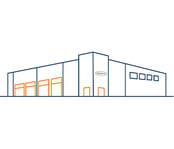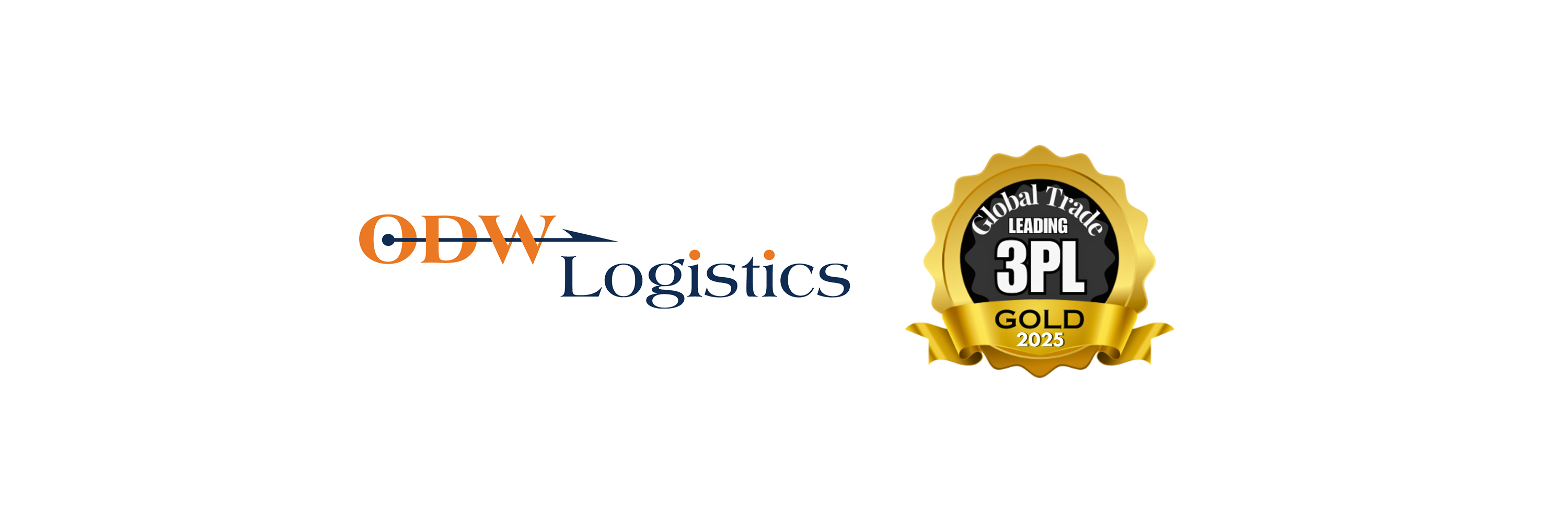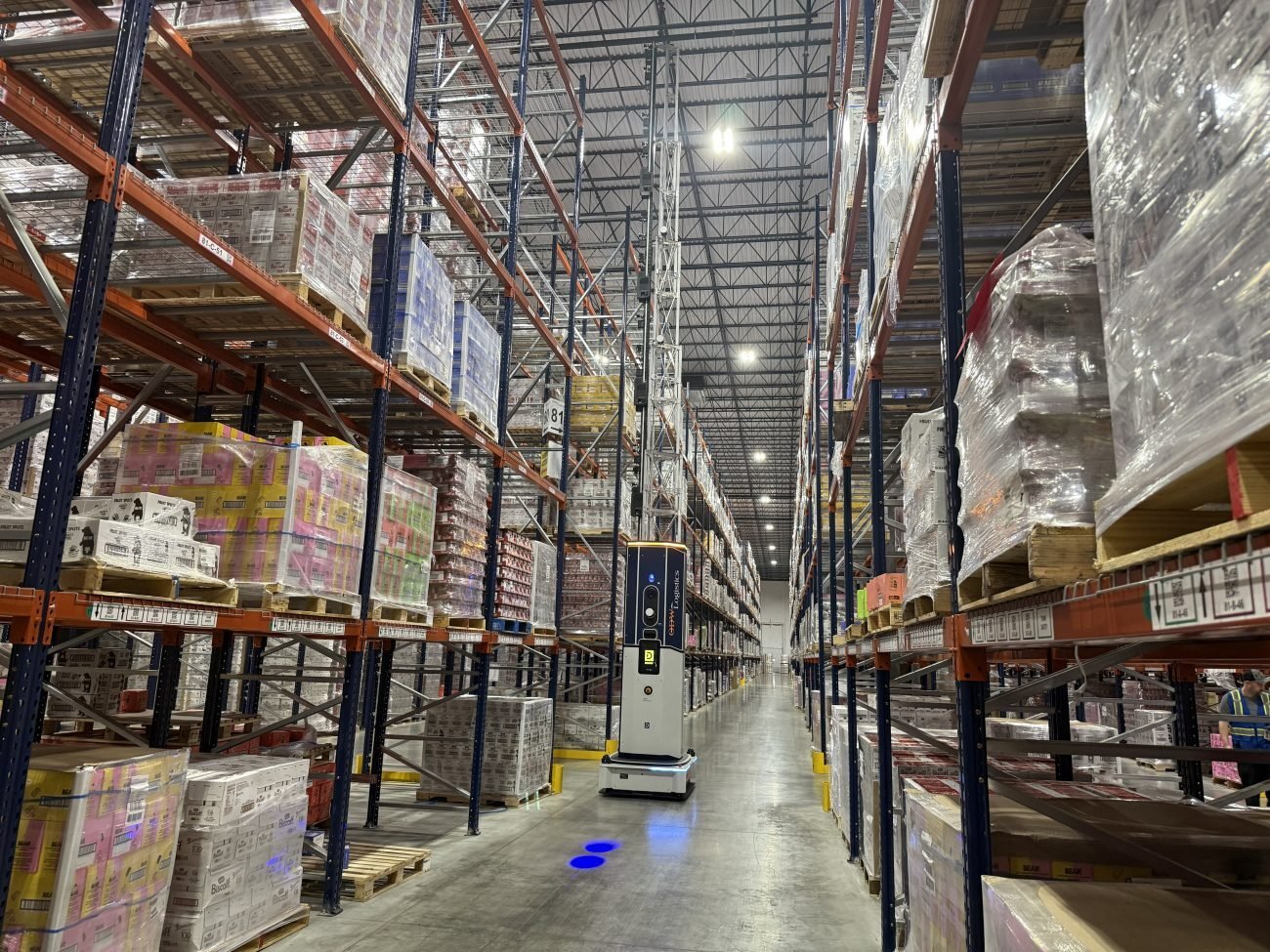Just like you need to constantly monitor the blind spots all around you on the highway, having a swivel head in today's environment can help food and beverage manufacturers and distributors avoid issues, grow and reach their financial goals.
ODW Logistics handles logistics for some of the world's best-known food and beverage brands ranging from retail-focused and e-commerce first-timers to digitally native start-ups. ODW's experiences have shown that these are ten blind spots food and beverage brands are encountering in their logistics today.
1 - Changes in Big Box Retailer Compliance
Evolving compliance requirements of large retailers can easily creep up on sellers. The big box chains continue to increase the demands for on-time-in-full (OTIF) delivery. Not only do performance service level agreements (SLAs) change regularly, but the added requirements and details make compliance complex.
Stringent delivery windows aren't straightforward and can be a minefield to new—as well as seasoned sellers—who fail to keep a pulse on what it means to be “on-time” for different retailers. Adding to the complexity, many of the major retailers control their own transportation through collect agreements which can layer in timing issues such as pick-up, routing, and carrier performance.
Everything from wrong pallet choices to unmet UCC requirements can all ding food manufacturers. To make matters more challenging, rules among the large retailers vary.
In today's retail environment, food and beverage sellers must check for changes constantly to maintain compliance. To make things even more difficult, information regarding revisions, updates, and changing expectations can travel through multiple parties before ever reaching the right parties, whether that's you or your provider.
2 - Chargebacks with Bottom Line Impact
Chargebacks are the consequence of compliance blind spots and a blind spot all their own. As they become more costly, overlooking them can dent your bottom line. Accessorial chargebacks of $60 from a distribution center to replace a pallet that costs $8 or $9 are a common example.
Accessorial Chargebacks Related to “In-Full” Add Up
- Wrong pallet grades
- Incorrect shrink-wrapping
- Broken pallets
- Nails sticking out of pallets
- Mis-stacked cases
Chargebacks related to on-time are considerable on their own and can become a significant cost center if they become a habit. Food manufacturers are charged a percentage of the overall value of a shipment. That brings a sting whether you're talking about $10,000 in caviar or popcorn because it's the same percentage.
Knowing a retailer's rules regarding appointments and scheduling is key to controlling costs. Keeping records to dispute incorrect chargebacks is equally important. Retailers today often provide chargebacks 90 days in arrears, which makes good recordkeeping all the more important. It's difficult to rely on memory that far back.
3 - Relationship Damage from Non-Compliance
Monetary damage might not be the worst consequence of non-compliance with big retailers' requirements. Don't turn a blind eye toward the damage to an account.
Retailers keep detailed scorecards on shippers. Food manufacturers should keep those scores squarely in view and work to maintain them.
The information on retailers' scorecards is used to determine whether to charge food and beverage suppliers higher rates. Retailers also use these scores to decide whether or not to award better shelf space or to increase order volume based on a shipper's ability to hit key performance indicators (KPIs).
On the flip side, shippers themselves can leverage positive scorecard performance to negotiate more favorable terms and larger contracts with retailers.
Food manufacturers with private label contracts with retailers have an even bigger incentive to not be blind-sided by poor marks. A food manufacturer's name may not be on the product, but the blame for non-compliance with OTIF terms is theirs, as is the risk of losing a lucrative account.
When you outsource to a 3PL, your logistics partners represent your brand. Compliance with retailers is in the hands of the 3PL. This is especially true when a 3PL handles the transportation leg. All the independent carriers a 3PL hires need to be periodically vetted in order to avoid blind spots.
4 - Failing to Make the Grade
Taking anything for granted in food and beverage logistics can have disastrous results. And yet, in the fast-paced food and beverage supply chain, things fall through the cracks.
Blind spots when it comes to food safety fall into two areas food manufacturers or their logistics partners need to watch carefully.
The first is instilling and maintaining system-driven processes in inventory management, warehouse management and order management. This responsibility can never leave a food manufacturer's sights whether you manage fulfillment inhouse or outsource to a 3PL.
System-driven processes are paramount in the food world. They dictate food rotation and food storage. With food rotation, you follow the logic, like for example, the first-in-first-out (FIFO) logic at lot-code level. You're never going to want to manage those sorts of things outside of a consistent, well-maintained system.
A key dynamic of food rotation that can come into play is that some retailers have their own shelf-life requirements. For instance, one retailer may say they will not accept anything that has less than six months of shelf life remaining. Another retailer might accept something down to three months remaining. System-driven processes are essential in situations like these to carefully manage FIFO and other logics alongside other customer requirements.
The second food safety blind spot is ensuring those in charge, whether they are inhouse or at your 3PL, know how to manage a facility in accordance with FDA regulations or the requirements for AIB Certification.
Remaining in compliance should never be a blind spot for food and beverage companies. Storing and handling products for human consumption requires companies to meet higher standards for safety and cleanliness than for other commodities. In an industry where labor is at a premium across the country, this kind of work requires associates with experience in food-handling and potentially in temperature-controlled environments.
5 - Not Any Warehouse Will Do
In food and beverage logistics, a shipper's standards of care need to be fully understood and meticulously met to protect the integrity of the product and prevent spoilage. Maintaining the right temperature is at the top of the list of those standards. Refrigerated products require temperature-controlled space. Freezer products require frozen warehouses. Dedicated space and specialized experience are required.
Even products that are fine in an ambient setting need to be monitored for temperature extremes and potential cross-contamination from other products. Associates need to be vigilant which requires training and experience.
Another potential blind spot is that food is optimally stored in shelves, not stacked bulk—or pallet on top of pallet. Bulk storage can bring lower variable rates for storage. However, FIFO and first-expired-first-out (FEFO) management is harder in bulk settings than it is in shelved facilities because rotation often requires moving pallets out of the way. Additionally, bottom pallets in bulk environments can be crushed, which creates a damage and food spoilage risk.
6 - Omnichannel Is Inevitable
No matter what food or beverage you specialize in, plan for an omnichannel future. That may mean hiring specialists or partnering with a 3PL with omnichannel experience. At ODW we've seen that even mature brands that have never ventured into the ecommerce are now candidates for a branded online store, online marketplaces, Amazon storefronts and Fulfillment by Amazon (FBA).
Gearing up for these channels is a blind spot for food and beverage manufacturers who need the resources to understand how to manage and monitor sales. These companies need inhouse staff or 3PL partners who can flex to meet forecasts and respond to unexpected surges in orders that can happen in ecommerce.
Still not convinced that there is an online market for grocery items in the $1.50 range, for example? ODW's “overpacking program” is an example of the possibilities. In the program, low-priced items can be pre-packaged for bulk buying in a three-packs for example. This enables sellers to get around the margin issue by selling more volume.
7 - Value-Added—Not Just a Nice to Have
Value-added services (VAS) are in demand with retailers and a growing opportunity for food manufacturers. VAS are custom, unique and pose labor challenges because the work is sporadic, dynamic and requires special management and training.
The blind spot is whether your inhouse operations or outside provider has the capability and experience to perform these processes. It can become cost prohibitive to have to ship goods out to a VAS specialist every time you need have display pallets or kits built. The transportation and secondary handling are costly. Read how the ODW Solutions Team reduced costs 50% on one CPG customer's VAS program.
8 - Good to Grow?
Omnichannel sales create omni opportunities for growth—a potential blind spot for food and beverage manufacturers with inhouse operations or 3PL partners unprepared to scale agilely.
If an organization starts to grow and finds there are more transactions coming from a certain region of the country, it's time to dig into the data. When average cost per pound rises well above the company average, a network expansion is in order. This is necessary to control shipping costs which can quickly get out of hand as companies strain to make one- and two-day service agreements.
A network study and analysis will help food suppliers understand the impact of standing up an additional distribution center or additional centers. With that information, a food manufacturer has the choice of creating a distribution network on their own or leveraging the network and expertise of a 3PL.
The biggest blind spots of network growth are choosing distribution center locations with an eye toward continuous expansion. Agility is key.
A second blind spot is relying too much on expensive full truck loads. Leveraging less than truckload (LTL) or other freight consolidation strategies is essential for containing transportation costs.
Lastly is the final mile. Committing all shipments to one parcel carrier can blind shippers to better rates and service levels available from a multi-carrier strategy.
9 – Technology for Visibility
For bottlers and food brands expanding into omnichannel, the lack of technology affording visibility into inventory, orders and shipments is often a major blind spot. Traditional retail distribution models don't have the level of tracking ecommerce consumers today need. Manufacturers can piggyback on 3PL's inventory management system (IMS) to achieve a network-wide view of inventory.
Manufacturers can also leverage 3PLs' warehouse management systems (WMS) to monitor the fulfillment of each order and 3PLs' transportation management systems (TMS) to track shipments all the way to customers' door.
When operating through multi nodes or in several facilities across states, having a holistic view of all inventories and shipments is essential. Read how ODW's TMS program enabled Bellisio Foods make proactive transportation decisions that saved $1.4M.
As bottlers' and food manufacturers' volume grows, IMS, WMS and TMS become essential, but implementing and continuously updating this software can be cost prohibitive. Many food manufacturers get around this by partnering with 3PLs and leveraging their systems.
10 - Eyes on Transportation Rates
No conversation about blind spots would be complete without a discussion of transportation rates.
At ODW, we've seen from the transportation side companies going from quarterly or bi-annual RFPs to almost weekly RFPs now. Many are throwing all of their business out to a carrier network every week.
Blind spots exist to food manufacturers who don't have the resources and expertise inhouse to understand the capacity issues and constraints that exist. By misjudging the right time to go in and test the spot market, many are missing the best rates by a long shot.
One way or another, food manufacturers need a team that's made freight brokerage its full-time job, that know what engines to pull data from and how to read it. Otherwise there are sure to be blind spots to opportunities that literally change by the minute today.
There are many instances where 3PLs can help bring food and beverage manufacturers' logistical blind spots in full view.
Read the next article in this series to learn how 3PLs can provide the winning recipe for growth and profitability. It's coming soon.
ODW Logistics
Since 1971, we’ve been providing warehousing, distribution, and transportation solutions for hundreds of brands. We operate as an extension of your business to control costs throughout your supply chain that deliver you a competitive advantage over your competition.RECENT POSTS
Introduction: The Evolving Landscape of E-commerce Fulfillment In the fast-paced world of online retail, customer expect...
Dec. 18, 2025 09:26 AM
ODW Logistics has been named a Top 50 Third-Party Logistics (3PL) Provider by Global Trade magazine and recognized in th...
Dec. 17, 2025 09:33 AM
December 3, 2025
Dec. 04, 2025 09:10 AM









.jpg)

